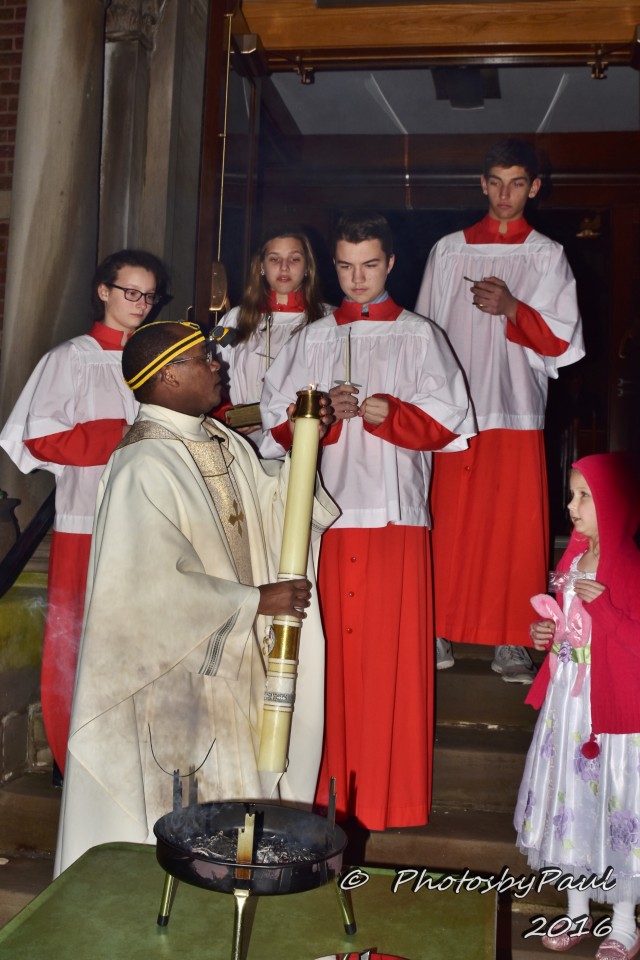After the main celebrant creates the ” blazing fire” and greets the people and blesses the fire the Paschal Candle is brought forward. This candle should be made of wax, never be artificial, be renewed each year, be only one in number, and be of sufficiently large size that it may convey the truth that Christ is the light of the world. This description is developed in no. 94 of Built of Living Stones which reminds us that the Paschal Candle is the symbol of the “light of Christ, rising in glory,” scattering the “darkness of our hearts and minds.” “Above all, the Paschal Candle should be a genuine candle, the pre-eminent symbol of the light of Christ. Choice of size, design, and color should be made in relationship to the sanctuary in which it will be placed . . . ” (Congregation for Divine Worship and the Discipline of the Sacraments, Circular Letter Concerning the Preparation and Celebration of the Easter Feasts [1988], no 82).
The priest lights the paschal candle from the new fire and says: May the light of Christ, rising in glory, dispel the darkness of our hearts and minds. (EV, no.14) One of the ministers takes burning coals from the fire and places them in a censer (thurible) and the priest, in the usual way, places incense into it. The deacon, or in his absence another appropriate minister accepts the Easter candle from the celebrant and a procession is formed. Then the order of procession begins with the thurifer with smoking thurible, preceding the minister holding the candle, followed by the ministers and the priest and the people.


